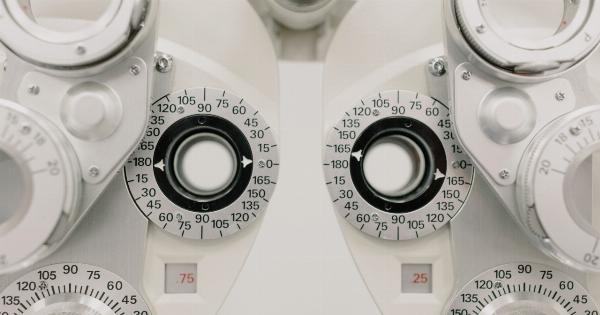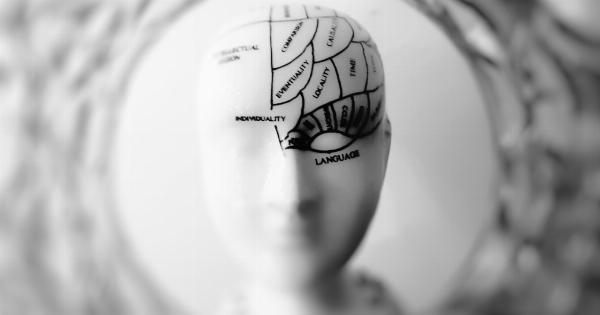Human beings have always strived to enhance their capabilities and overcome physical limitations. In the realm of healthcare, advancements in technology have paved the way for revolutionary solutions to various medical challenges.
One such groundbreaking innovation is the development of bionic lenses, which have emerged as a game-changer for individuals with vision problems. These cutting-edge devices offer a ray of hope for those who struggle with poor eyesight, promising improved vision and an enhanced quality of life.
The Science behind Bionic Lenses
Bionic lenses, also known as artificial or electronic lenses, are advanced vision-correcting devices that integrate seamlessly with the human eye.
They are designed to mimic the natural focusing ability of the eye’s crystalline lens, compensating for any refractive errors that lead to nearsightedness, farsightedness, or astigmatism.
The technology behind bionic lenses is primarily centered around utilizing miniature electronic components and sophisticated algorithms.
These devices are often made up of an artificial lens, a tiny camera, and a microprocessor that analyzes the visual information captured by the camera. The microprocessor then adjusts the lens accordingly, adapting its shape to focus the incoming light precisely onto the retina, resulting in clear and sharp vision.
The Benefits of Bionic Lenses
Bionic lenses offer several significant advantages over traditional vision correction methods, such as glasses or contact lenses:.
1. Enhanced visual acuity:
One of the primary benefits of bionic lenses is their ability to provide an unparalleled level of visual clarity.
By adapting their shape and focusing the light accurately onto the retina, these lenses can correct a wide range of refractive errors, leading to sharper and clearer vision compared to conventional corrective measures.
2. Independence from external aids:
Bionic lenses eliminate the need for external aids, such as glasses or contact lenses, for vision correction.
This newfound independence allows individuals to engage in various activities without having to worry about misplaced glasses or discomfort caused by contact lenses.
3. Customizable vision:
Unlike glasses or contact lenses, which have fixed prescriptions, bionic lenses offer customizable vision correction.
The microprocessor in these devices can be programmed to adapt to an individual’s specific vision needs, allowing for precision and personalized vision correction.
4. Reduced risk of eye infections:
Wearing contact lenses carries a risk of developing eye infections or other complications. Bionic lenses eliminate this risk, as they are implanted directly into the eye, reducing the chances of infections caused by external factors.
5. Extended depth of field:
Bionic lenses can also extend the depth of field for individuals, enabling them to see objects at various distances with enhanced clarity.
This advancement is especially beneficial for individuals with presbyopia, as it allows for clear vision at both near and far distances without the need for multiple pairs of glasses.
The Potential Impact on Society
The emergence of bionic lenses has the potential to revolutionize the way we perceive and address vision problems. Here’s how this game-changing solution can impact society:.
1. Improved quality of life:
For individuals with vision problems, bionic lenses offer the possibility of a significantly improved quality of life.
Clearer vision and the freedom from external vision aids can enhance daily experiences, allowing individuals to enjoy activities without limitations.
2. Greater accessibility for all:
As the technology continues to evolve and become more accessible, bionic lenses can benefit a broader population.
The increased availability and affordability of these devices would ensure that everyone, regardless of their financial means, can have access to clear and enhanced vision.
3. Advancements in other fields:
The development of bionic lenses has the potential to drive advancements in various other fields, including robotics and virtual reality.
The technology utilized in these lenses, such as miniature cameras and advanced algorithms, can be adapted and applied to enhance the capabilities of other devices.
4. Reduced healthcare costs:
While bionic lenses may initially require a significant investment, they can potentially lead to a decrease in long-term healthcare costs.
By reducing the reliance on external aids and minimizing the risk of complications associated with traditional vision correction methods, bionic lenses can result in fewer visits to eye care professionals and a reduced need for replacements.
Current Challenges and Future Outlook
Although bionic lenses hold immense promise, there are still several challenges that need to be addressed for their widespread adoption:.
1. Surgical procedure:
The implantation of bionic lenses requires a surgical procedure, which may deter individuals who fear or are reluctant to undergo surgery.
Future advancements may focus on developing less invasive techniques to make the process more accessible and appealing.
2. Long-term safety and efficiency:
Further research is required to ensure the long-term safety and efficiency of bionic lenses.
Continuous monitoring and evaluation of patients who have received these implants are essential to identify and address any potential issues that may arise over time.
3. Affordability:
Bionic lenses can be costly, and their affordability remains a significant barrier for many individuals.
As technology advances and economies of scale come into play, the cost of these devices is expected to decrease, making them more accessible to a wider population.




























